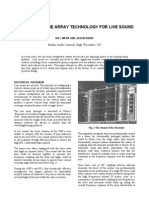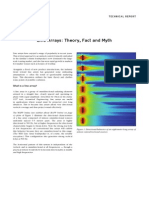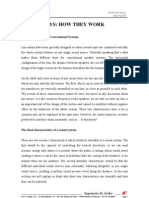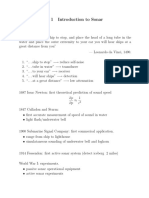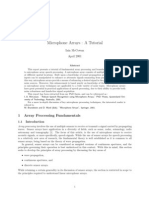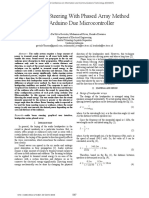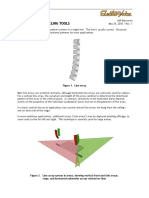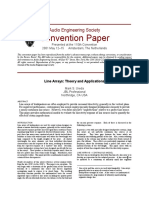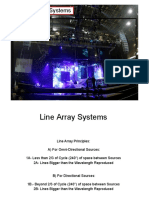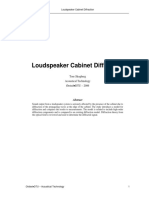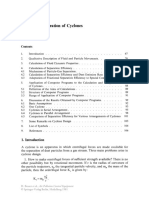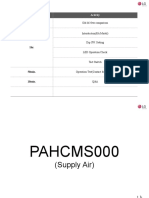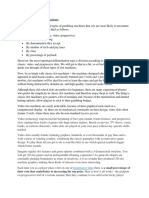0% found this document useful (0 votes)
19 views10 pagesBeyma LineArrays Esen
This document discusses Line Arrays, a type of sound system that has been used for years but is often misunderstood due to manufacturer differentiation. It reviews various solutions from manufacturers like L'Acoustics and Meyer Sound, detailing the theoretical principles, design criteria, and challenges associated with achieving effective sound projection. Key design considerations include critical distance, interference patterns, and the importance of curvature in the array for optimal sound coverage.
Uploaded by
Kaio AguiarCopyright
© © All Rights Reserved
We take content rights seriously. If you suspect this is your content, claim it here.
Available Formats
Download as PDF, TXT or read online on Scribd
0% found this document useful (0 votes)
19 views10 pagesBeyma LineArrays Esen
This document discusses Line Arrays, a type of sound system that has been used for years but is often misunderstood due to manufacturer differentiation. It reviews various solutions from manufacturers like L'Acoustics and Meyer Sound, detailing the theoretical principles, design criteria, and challenges associated with achieving effective sound projection. Key design considerations include critical distance, interference patterns, and the importance of curvature in the array for optimal sound coverage.
Uploaded by
Kaio AguiarCopyright
© © All Rights Reserved
We take content rights seriously. If you suspect this is your content, claim it here.
Available Formats
Download as PDF, TXT or read online on Scribd
/ 10


